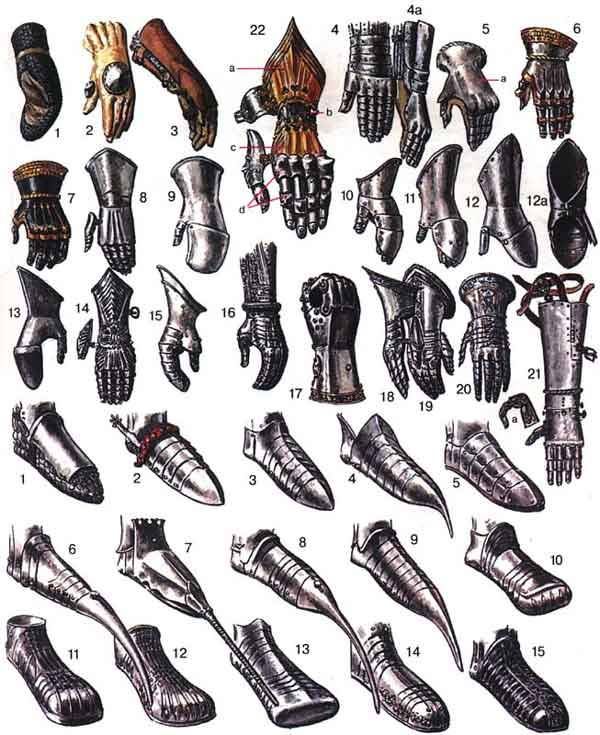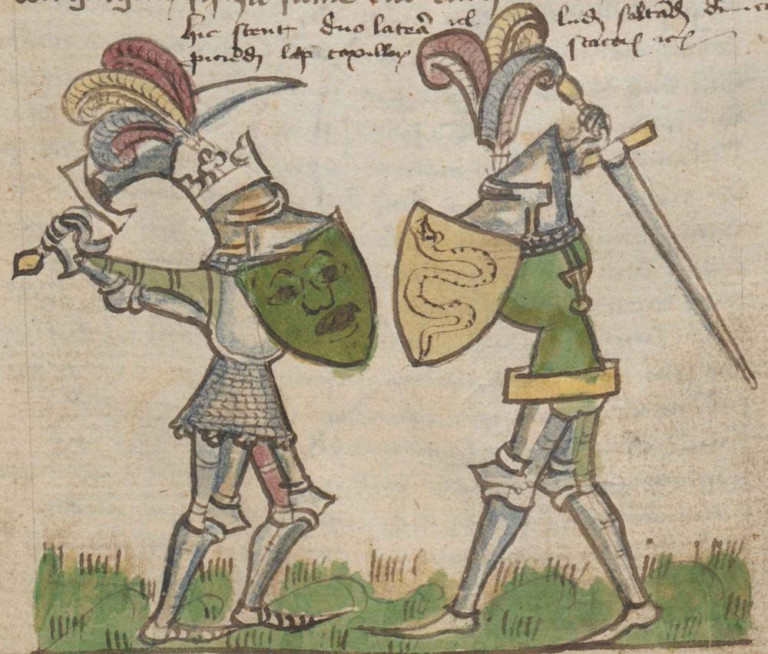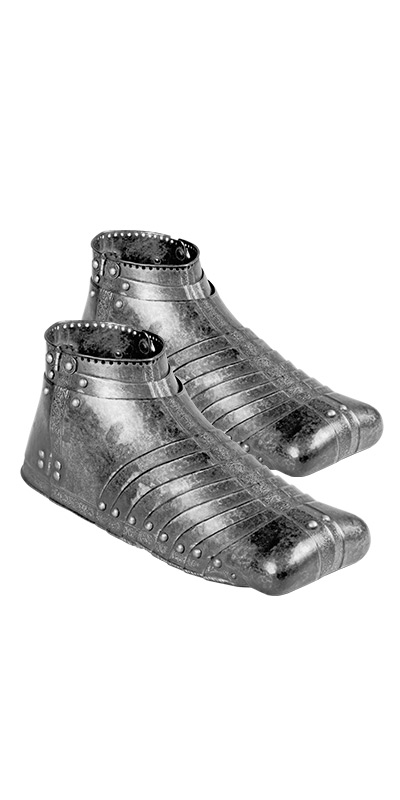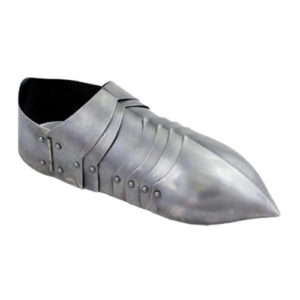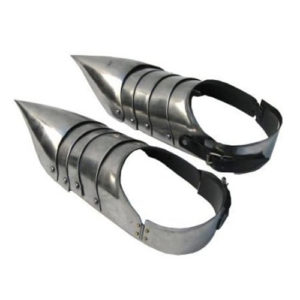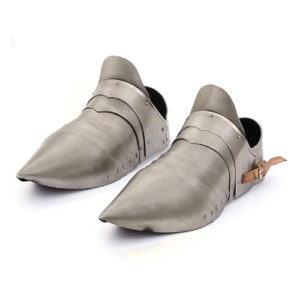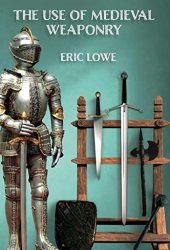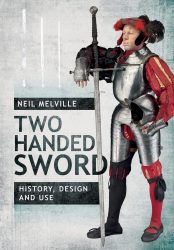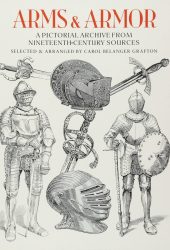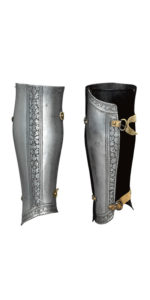The Sabaton or Solleret is a flexible steel piece of armour that covered the foot of a knight. They started to appear from the mid-14th century onwards.
Sabatons weren’t popular among men at arms fighting on foot. Instead, they were preferred by mounted soldiers as the feet would be at the perfect height for strikes from dismounted soldiers.
Fourteenth and fifteenth century sabatons usually ended in a tapered point or poulaine that went (well) beyond the wearer’s foot. This end imitated a type of shoe called crackows, which were popular at the time. These ends could be removed when the knight dismounted.
Sabatons were made of riveted iron plates called lames.
Mail and Plate Sabatons
In certain areas, like Italy, sabatons were made of mail. Sometimes, mail and plate sabatons are depicted side by side, indicating a knight might choose which one to use. While sabatons were preferred by mounted warriors (whose legs are exposed to attacks), mail sabatons might have been chosen for fighting on foot.
How to Wear a Sabaton
Sabatons were usually the first piece of armour to be put on. In order for them to work and protect the foot correctly, the plates have to be articulated so the sabaton can take the shape of the shoe underneath. Sometimes, the gaps between the sabaton and the greave were protected by mail, smaller plates, or scales.
Fifteenth century sabatons consisted of a toe cap, four articulated lames, a foot plate, an ankle plate, and a hinged heel cap. The different parts were joined with buckle straps.
There’s an effigy of Richard Beauchamp, the 13th Earl of Warwick in the Collegiate Church of St. Mary in Warwick that shows how the sabatons were worn (detailed above). Although the effigy doesn’t show spurs, there are remains of rivet holes and staples that indicate they would have been directly attached to the heel cap of the sabaton.
Two small holes on top of the sabaton’s toes were used to tie the front end of them to the shoe using lace or string. The back was secured by a buckle and strap circling behind the heel.
Medieval Depictions of Sabatons
